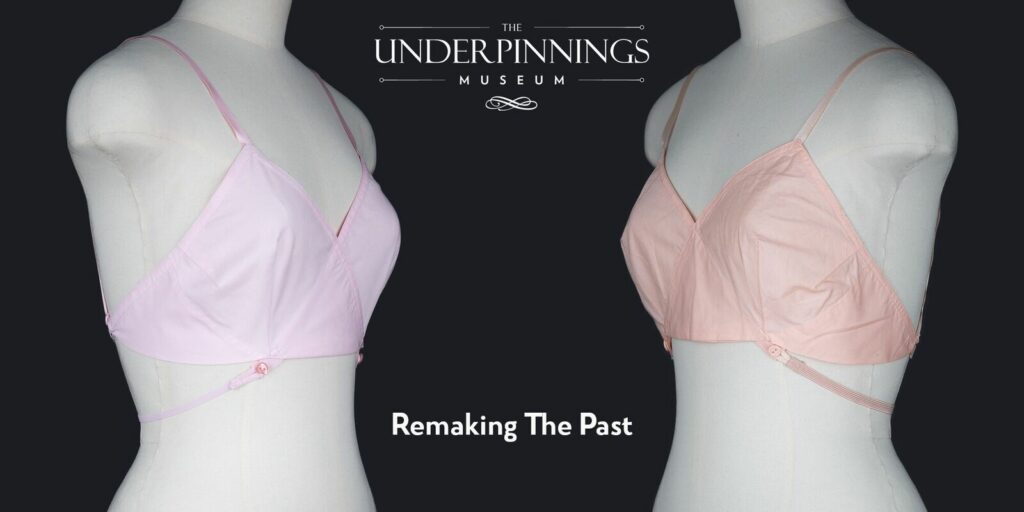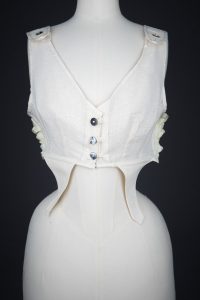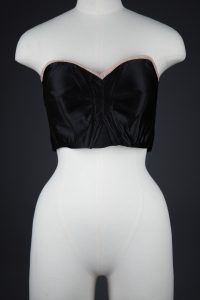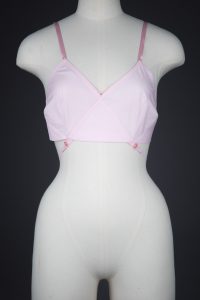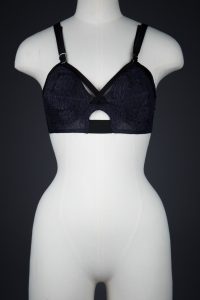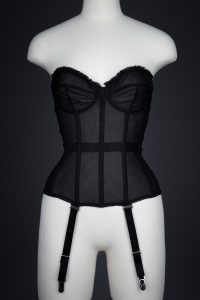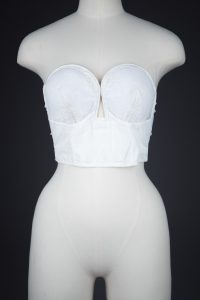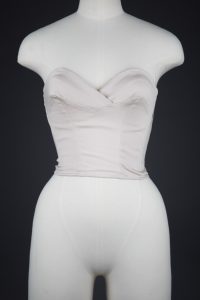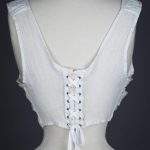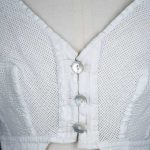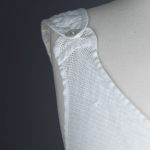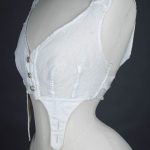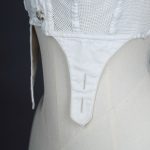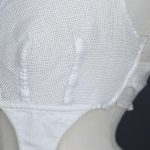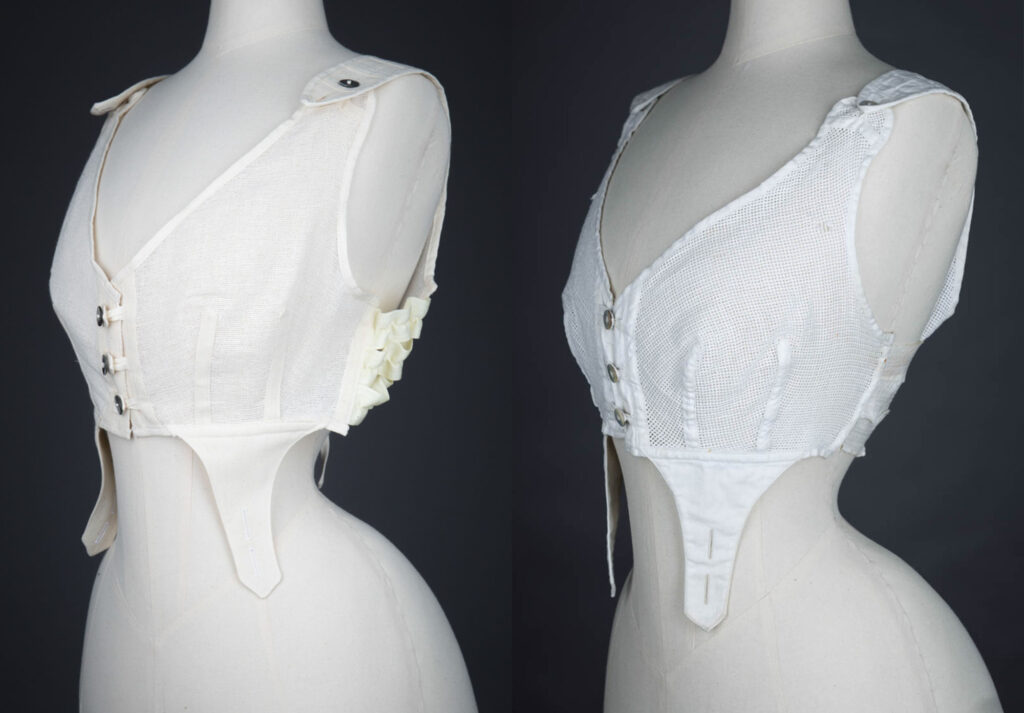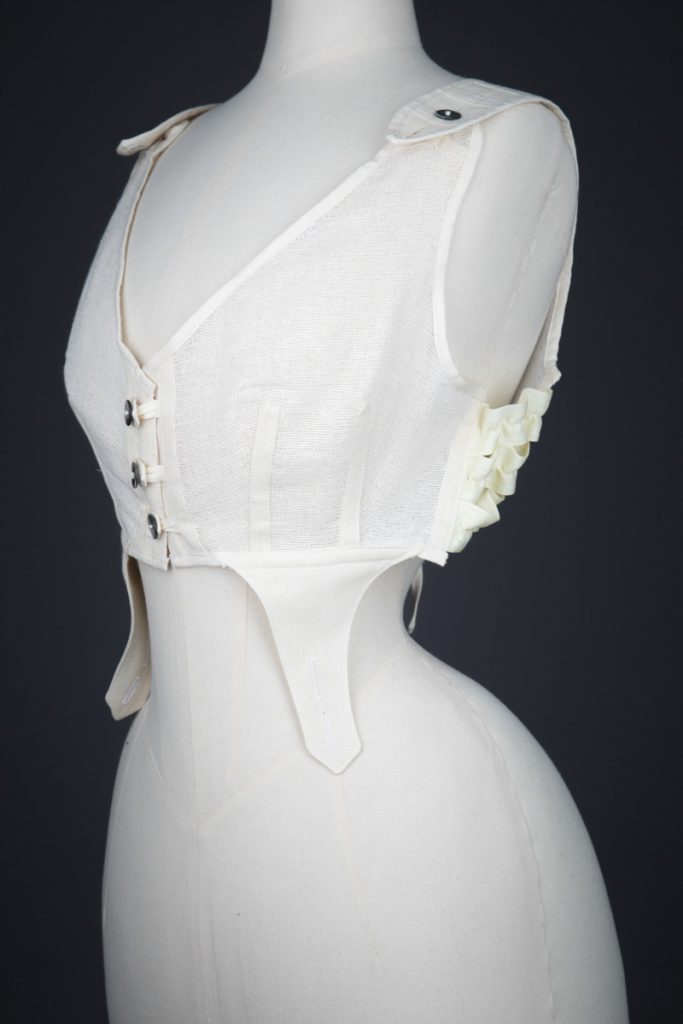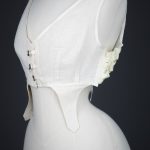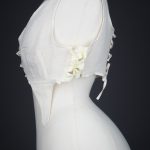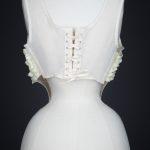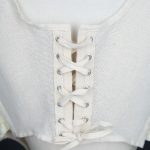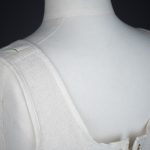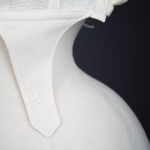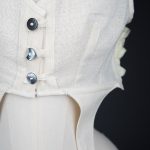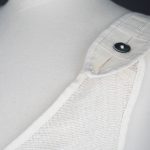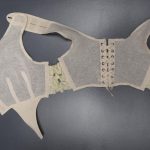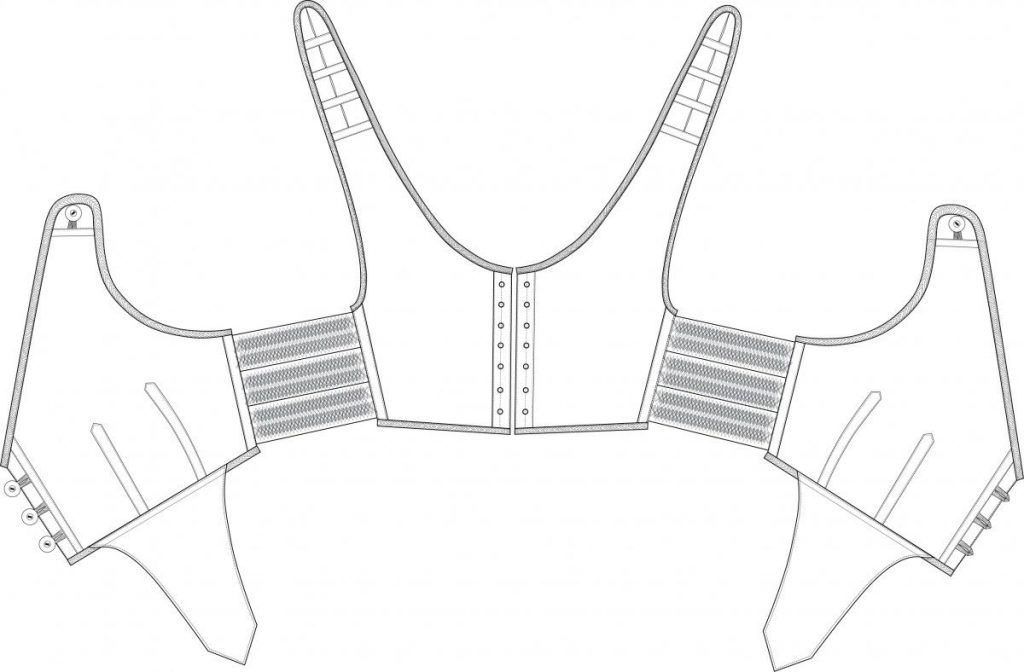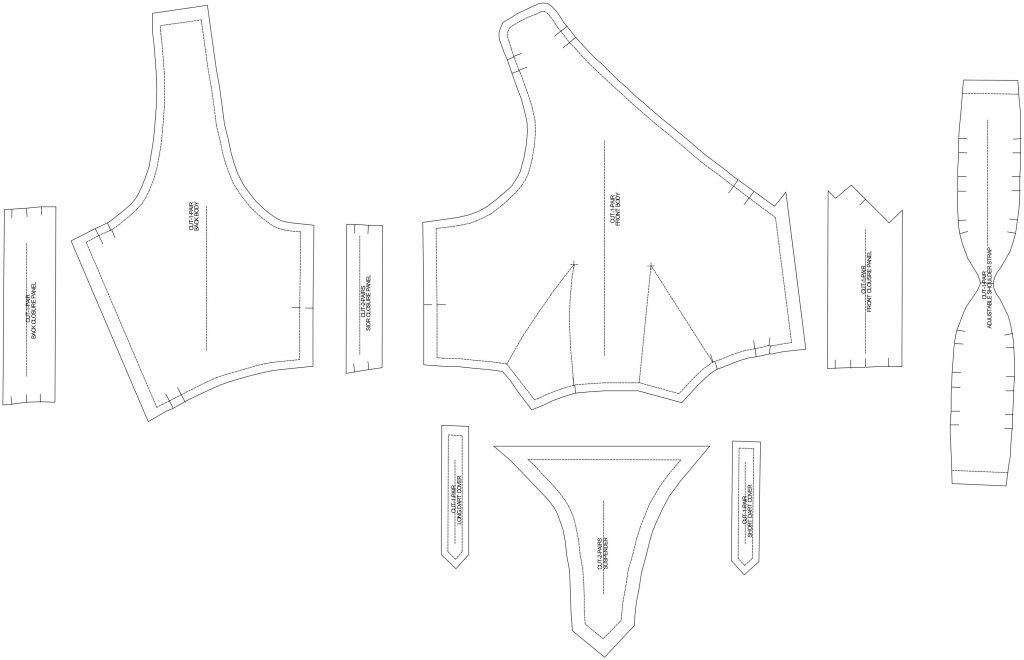This bust bodice is a highly unusual garment, representing a pre-cursor to the modern bra. At the time, it would have represented a number of impressive technological innovations, including cellular fabric, adjustable shoulder straps and elastic panelling.
Stretch panels in clothing were extremely innovative at this time and offered an unprecedented amount of fit flexibility. Likewise, the buttons at the shoulders represented a level of adjustability in an area where it did not become standard until the 1960s. The tabs at the bottom of the garment were likely designed to button onto underwear worn on the lower half of the garment to keep the underpinnings smooth and in place during wear.
Cellular fabrics, like Aertex – which was invented in the UK in 1888 – ensured that underwear was warm in the winter, as pockets of air were trapped in the holes (or ‘cells’), yet also breathable in the summer. This was often marketed as being healthy underwear, or being ‘clothed with air’.
This garment would have offered support and lift at a time where women relied on rigid and structure corsetry for their bust support. Such a piece would likely have been part of the ‘Rational Dress Reform’, which criticised corsetry for how it restricted women.
The garment is entirely machine stitched, with neat and small stitches throughout. The front panels are constructed of airtex, with two darts over the bust that have been taped over with cotton twill channels. It fastens at the front with a row of cotton rouleaux loops and shell buttons, stitched into cotton twill plackets. Cotton twill panels extend from the front bust panels down to points with two vertically placed button holes.
The sides of the garment comprise of three horizontal rows of elastic strips. The centre back of the garment is also made of aertex, leading to a centre back cotton twill panel of eyelets encased in channels with flat steel boning, with cotton corset-style lacing fastening the centre back. The shoulders of the garment feature shell buttons and a row of cotton twill button holes. Raw edges are taped with cotton twill tape and machine stitched.
